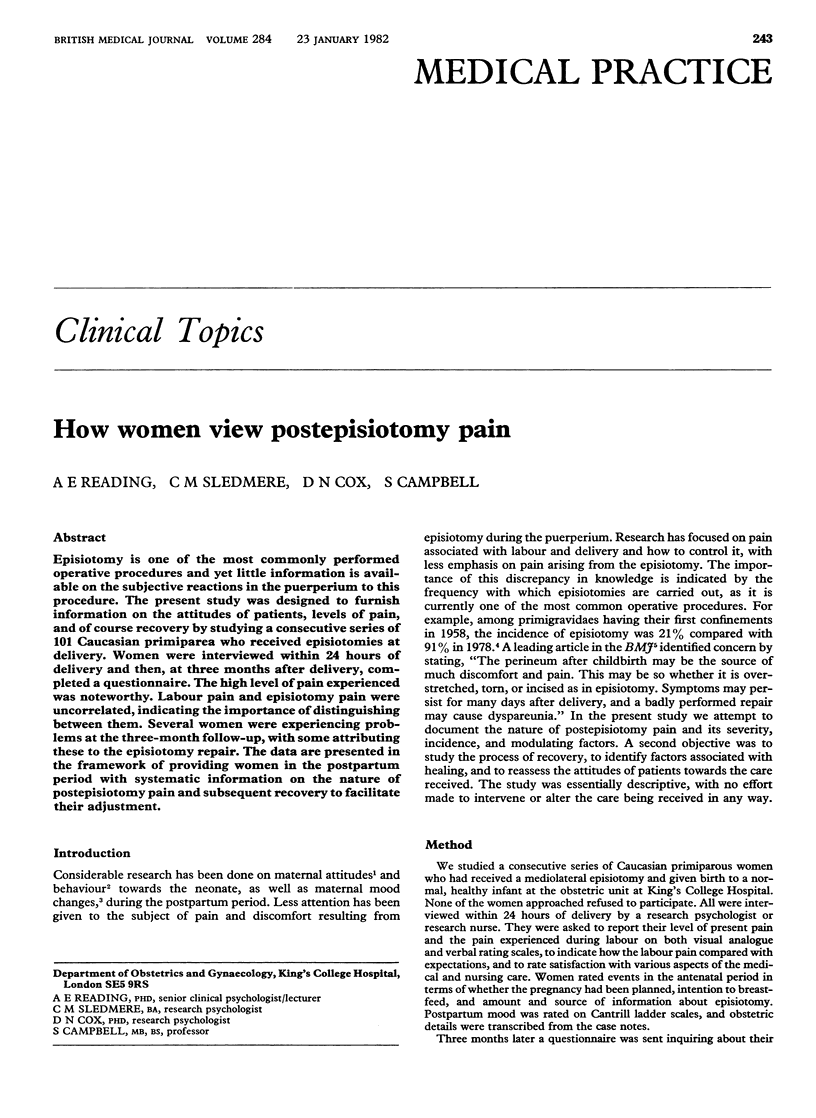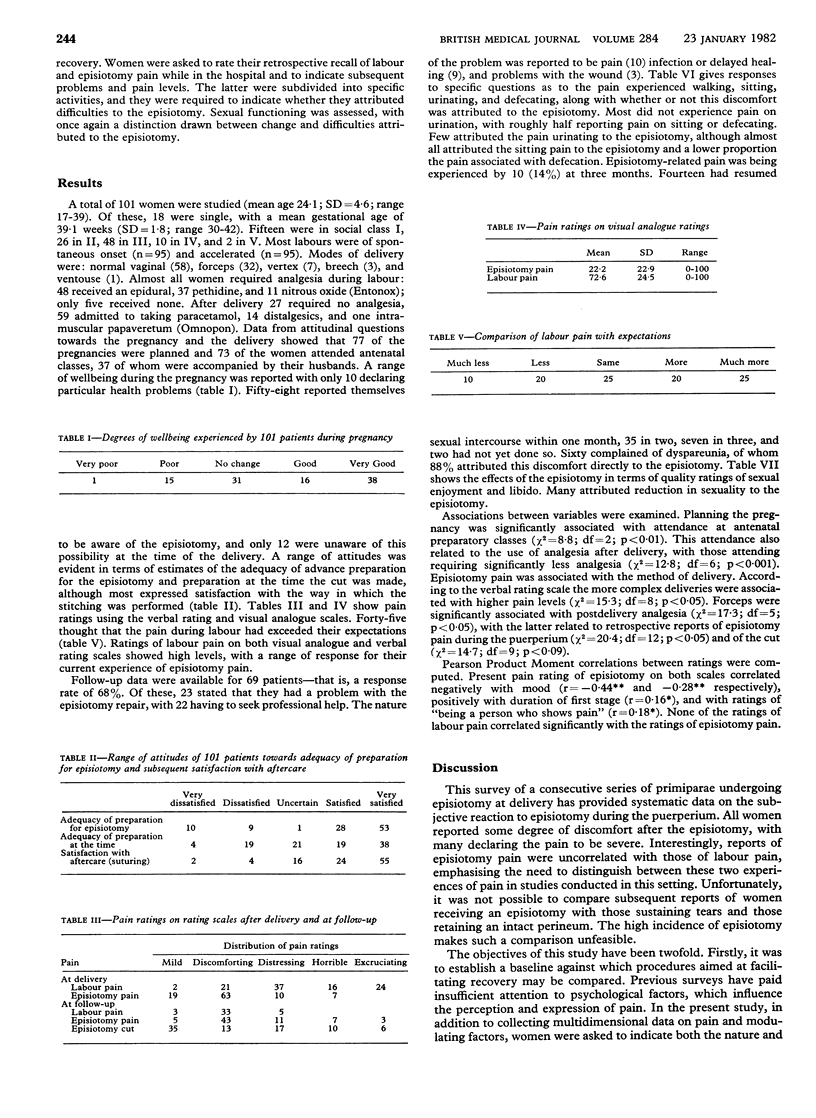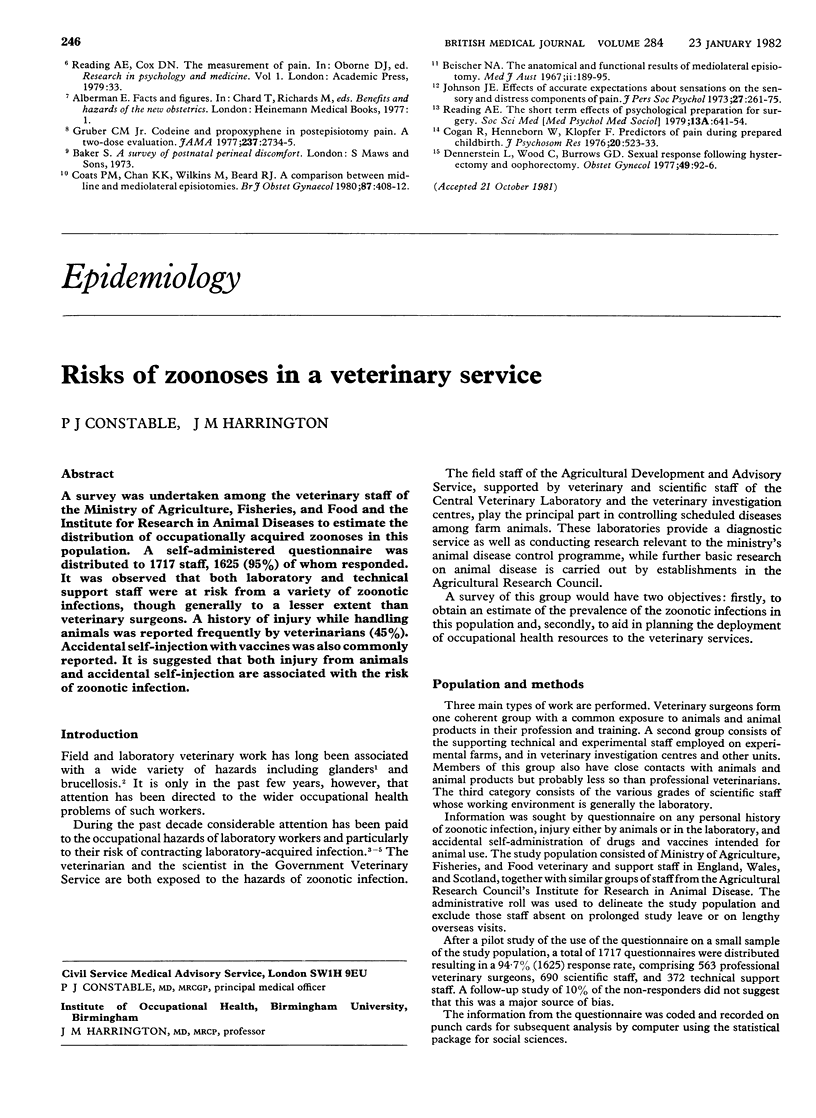Abstract
Episiotomy is one of the most commonly performed operative procedures and yet little information is available on the subjective reactions in the puerperium to this procedure. The present study was designed to furnish information on the attitudes of patients, levels of pain, and of course recovery by studying a consecutive series of 101 Caucasian primiparea who received episiotomies at delivery. Women were interviewed within 24 hours of delivery and then, at three months after delivery, completed a questionnaire. The high level of pain experienced was noteworthy. Labour pain and episiotomy pain were uncorrelated, indicating the importance of distinguishing between them. Several women were experiencing problems at the three-month follow-up, with some attributing these to the episiotomy repair. The data are presented in the framework of providing women in the postpartum period with systematic information on the nature of postepisiotomy pain and subsequent recovery to facilitate their adjustment.
Full text
PDF



Selected References
These references are in PubMed. This may not be the complete list of references from this article.
- Beischer N. A. The anatomical and functional results of mediolateral episiotomy. Med J Aust. 1967 Jul 29;2(5):189–195. [PubMed] [Google Scholar]
- Buchan P. C., Nicholls J. A. Pain after episiotomy--a comparison of two methods of repair. J R Coll Gen Pract. 1980 May;30(214):297–300. [PMC free article] [PubMed] [Google Scholar]
- Coats P. M., Chan K. K., Wilkins M., Beard R. J. A comparison between midline and mediolateral episiotomies. Br J Obstet Gynaecol. 1980 May;87(5):408–412. doi: 10.1111/j.1471-0528.1980.tb04569.x. [DOI] [PubMed] [Google Scholar]
- Cogan R., Henneborn W., Klopfer F. Predictors of pain during prepared childbirth. J Psychosom Res. 1976;20(6):523–533. doi: 10.1016/0022-3999(76)90053-2. [DOI] [PubMed] [Google Scholar]
- De Chateau P., Wiberg B. Long-term effect on mother-infant behaviour of extra contact during the first hour post partum. I. First observations at 36 hours. Acta Paediatr Scand. 1977 Mar;66(2):137–143. doi: 10.1111/j.1651-2227.1977.tb07825.x. [DOI] [PubMed] [Google Scholar]
- Dennerstein L., Wood C., Burrows G. D. Sexual response following hysterectomy and oophorecomy. Obstet Gynecol. 1977 Jan;49(1):92–96. [PubMed] [Google Scholar]
- Gruber C. M., Jr Codeine and propoxyphene in postepisiotomy pain. A two-dose evaluation. JAMA. 1977 Jun 20;237(25):2734–2735. [PubMed] [Google Scholar]
- Johnson J. E. Effects of accurate expectations about sensations on the sensory and distress components of pain. J Pers Soc Psychol. 1973 Aug;27(2):261–275. doi: 10.1037/h0034767. [DOI] [PubMed] [Google Scholar]
- Reading A. E. The short term effects of psychological preparation for surgery. Soc Sci Med Med Psychol Med Sociol. 1979 Nov;13A(6):641–654. doi: 10.1016/0271-7123(79)90109-3. [DOI] [PubMed] [Google Scholar]
- Robson K. M., Kumar R. Delayed onset of maternal affection after childbirth. Br J Psychiatry. 1980 Apr;136:347–353. doi: 10.1192/bjp.136.4.347. [DOI] [PubMed] [Google Scholar]
- Stein G. S. The pattern of mental change and body weight change in the first post-partum week. J Psychosom Res. 1980;24(3-4):165–171. doi: 10.1016/0022-3999(80)90038-0. [DOI] [PubMed] [Google Scholar]


